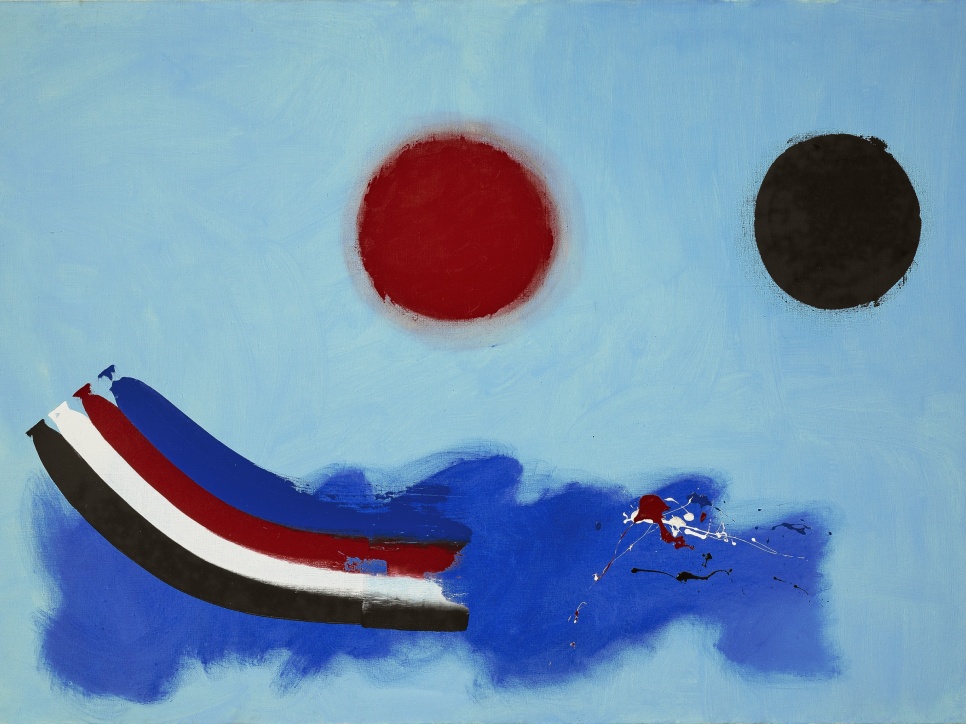
Brice Marden was born in Bronxville, New York in 1938. He attended Florida Southern College, Lakeland from 1957-1958 and received his BFA from Boston University’s School of Fine and Applied Arts in 1961. Marden then studied at Yale’s School of Art and Architecture, receiving his MFA in 1963. Studying under artists such as Alex Katz and Jon Schueler, alongside Richard Serra and Chuck Close, Marden developed his early aesthetic: large, rectangular monochromatic panels with a particularly muted palette.
Following school, Marden moved to New York, where he worked as a guard at the Jewish Museum. This job gave him the opportunity to comprehensively study Jasper Johns, who was honored with a retrospective in 1964. He continued his personal studies the following summer in Paris, where he took interest in Alberto Giacometti and Jean Fautrier, as well as masters such as Diego Velázquez and Edouard Manet.
Once again living in New York, he began working as Robert Rauschenberg’s assistant in 1966. 1966 also was the year of his first solo show at the Bykert Gallery, where he introduced his ubiquitous oil-beeswax paintings. By mixing his oil paint with beeswax, Marden reduced the shine of the paint while increasing the texture of the painted surface. The result, a dense painted surface, absorbed light while reflecting it, defining a unique aesthetic that characterizes this period of Marden’s work.
Later in his career, Marden’s paintings became reflections of his experiences and travels. A 1971 visit to the Greek island of Hydra prompted an intense interest in light and landscape, visible in an intensified color palette. Visits to Thailand, Sri Lanka and India introduced Marden to the cultural history, landscape and traditions of Asia. “The Masters of Japanese Calligraphy” show of 1984 at the Asia Society in New York exacerbated his interest and prompted Marden to master the art form, resulting in the highly acclaimed, wonderfully calligraphic “Cold Mountain” series of 1989-1991. More recent work has grown in size, measuring up to 24 feet, as in 2000’s “The Propitious Garden of Plane Image”. These influences took Marden beyond the rigidity of Minimalism and toward a more figurative school of abstraction.
Brice Marden’s work transcends strict art historical categorization, refusing to be classified as minimalist or strictly abstract. Instead, the influences of landscape and figure create a gestural language that calls to mind Abstract Expressionism while infusing it with a non-Western aesthetic sensibility. The result is a body of work that is stimulating and international in appeal, with critics like The New Yorker’s Peter Schjeldahl proclaiming Marden “the most profound abstract painter of the past four decades”.
A 1975 retrospective at the Solomon R. Guggenheim Museum of New York was Marden’s first museum show. In addition, Marden has been honored with one-person exhibitions at the Stedelijk Museum, Amsterdam; Documenta IX, Kassel; and the Serpentine Gallery, London as well as the Tate Gallery, London. New York’s Museum of Modern Art put together a comprehensive retrospective in 2006 that travelled to the San Francisco Museum of Modern Art in 2007, closing at Berlin’s Hamburger Bahnhof Museum für Gegenwart in the summer of 2007.
Marden’s work can be found in the permanent collections of the Solomon R. Guggenheim Museum, New York; the Museum of Modern Art, New York; the National Gallery of Art, Washington D.C.; and the Art Institute of Chicago, among others.
Brice Marden passed away at the age of 84 on August 9, 2023 in Tivoli, NY.